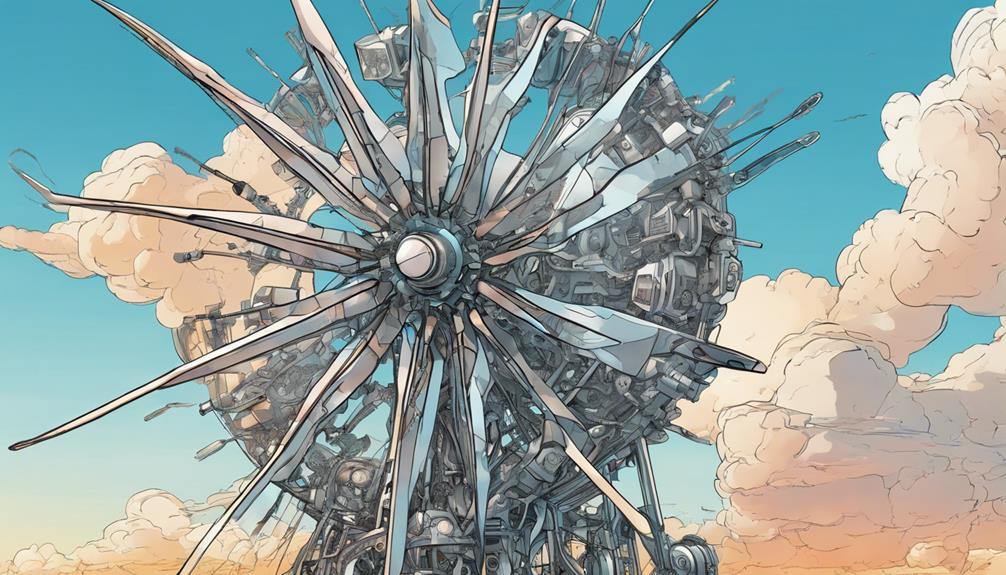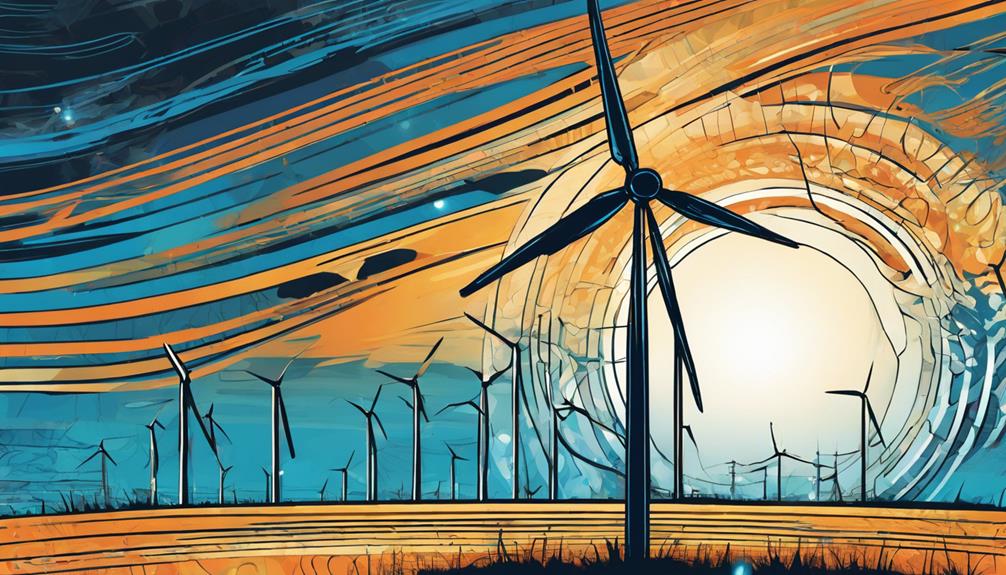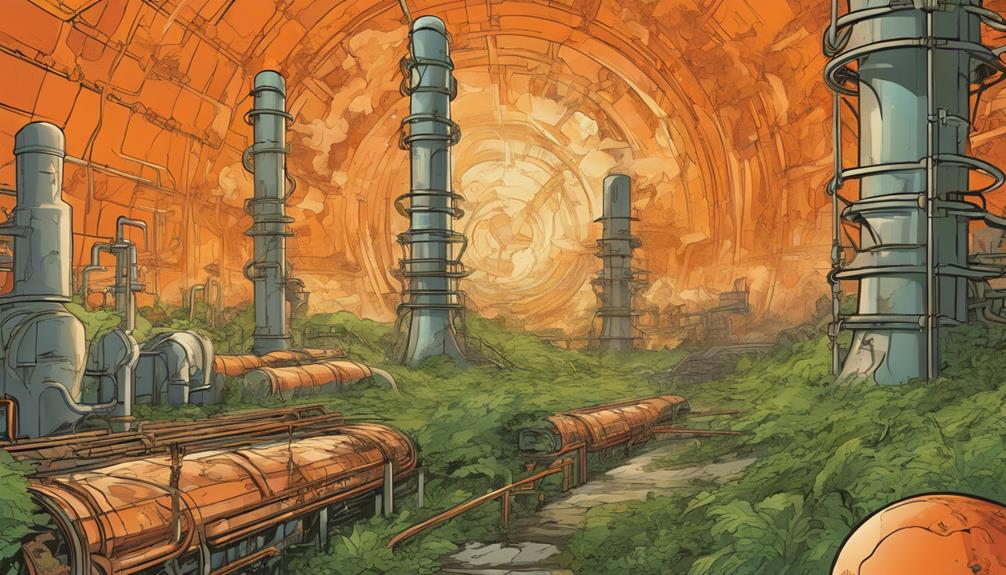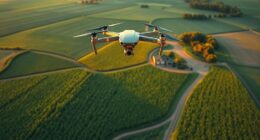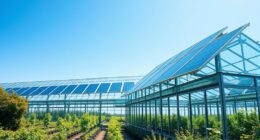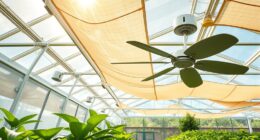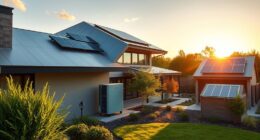Wind turbines are revolutionizing electricity generation by harnessing the kinetic energy of wind to produce clean, sustainable power on a massive scale. The primary components – base, tower, nacelle, rotor blades, and controller – work together to convert wind energy into mechanical energy. While wind turbines have a low environmental impact and are cost-effective, they also disrupt habitats and produce noise pollution. Despite these challenges, advancements in blade technology and performance are optimizing energy output. As the industry continues to evolve, innovations in design and integration are poised to reveal even greater potential.
Key Takeaways
- Wind turbines convert wind energy into mechanical energy through rotor blades, which is then converted into electricity.
- The nacelle houses key electronics and gearing systems that facilitate the energy conversion process.
- The controller adjusts speed and direction to optimize energy output, ensuring efficient electricity generation.
- Advanced blade technologies, such as four-blade designs, capture more kinetic energy and reduce noise pollution.
- Smart blade technologies and advanced materials enhance performance, maintenance, and overall efficiency of wind turbines.
Wind Turbine Components Explained
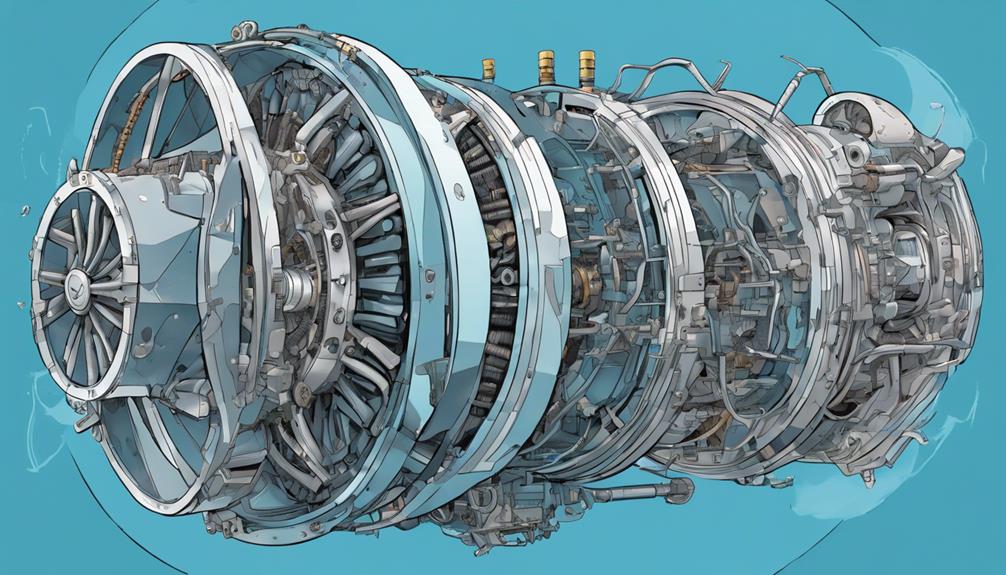
The base, tower, nacelle, rotor blades, and controller are the five primary components of a wind turbine, each playing a critical role in harnessing kinetic energy from the wind to generate electricity.
The base provides a solid foundation, while the tower supports the turbine's height.
The nacelle houses key electronics, including gearing systems and brakes, which regulate the turbine's rotation.
Rotor blades, typically between two and five, capture wind energy and convert it into mechanical energy.
The controller ensures the turbine operates within best parameters, adjusting factors like speed and direction to maximize energy output.
Understanding these components is essential for maintaining efficiency and reliability in wind turbine operations.
Environmental Impact and Regulation
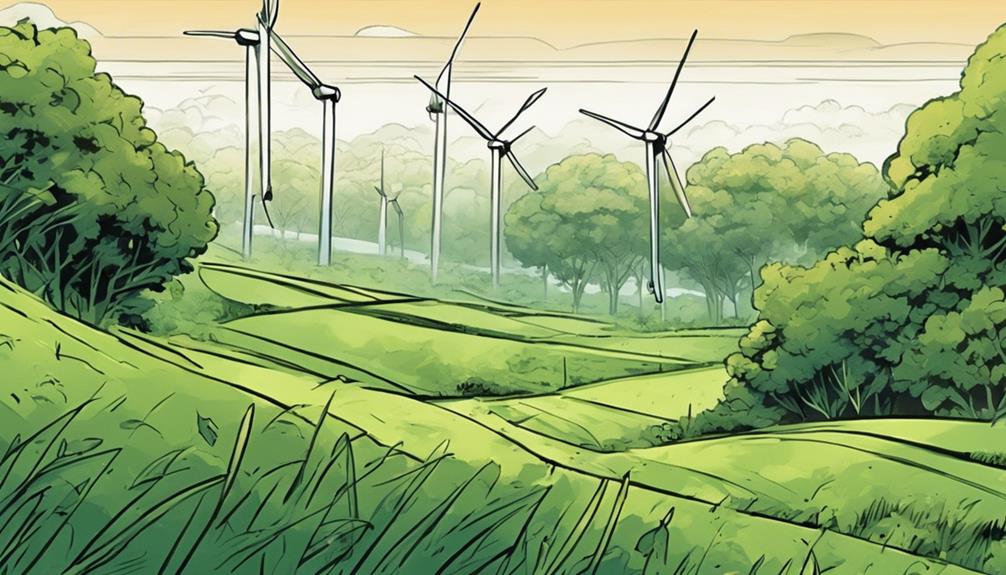
Wind turbines, touted for their eco-friendly credentials, have a complex relationship with the environment, generating electricity without emissions but also disrupting natural habitats and producing localized noise pollution.
While they provide clean renewable energy from an inexhaustible source, their installation can have negative impacts on wildlife and the landscape.
Governments, recognizing the significance of renewable energy, offer incentives like tax credits and grants to encourage wind turbine adoption. Regulatory compliance is vital for successful projects, and organizations provide guidance on balancing environmental concerns with profitability.
Staying updated on changing regulations at state and federal levels is essential for the continued growth of the wind energy industry.
Advantages and Disadvantages Compared
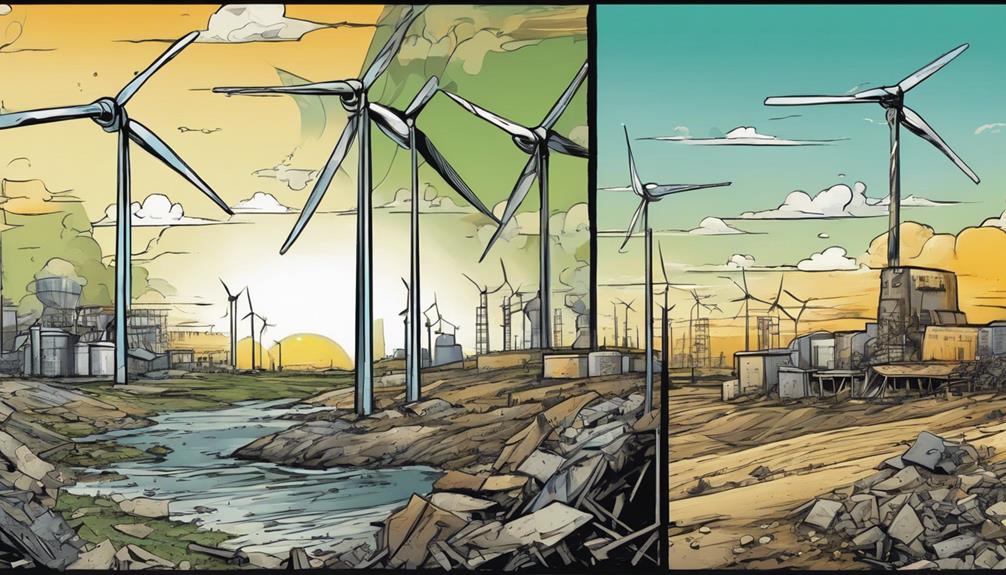
Beyond their environmental benefits, wind turbines offer a range of advantages that make them an attractive option for power generation, from cost-effectiveness to job creation. One of the significant benefits is their low operational costs, making them a competitive choice compared to fossil fuels. Additionally, wind turbines create job opportunities in local communities, stimulating economic growth. On the other hand, there are some drawbacks to take into account, such as high initial investment costs and potential wildlife disruptions.
| Advantages | Disadvantages |
|---|---|
| Low environmental impact | High initial investment costs |
| Cost-effective compared to fossil fuels | Wildlife disruptions |
| Job creation in local communities | Visual impact on the landscape |
| Reliable source of electricity | Noise pollution |
Blade Technology and Performance
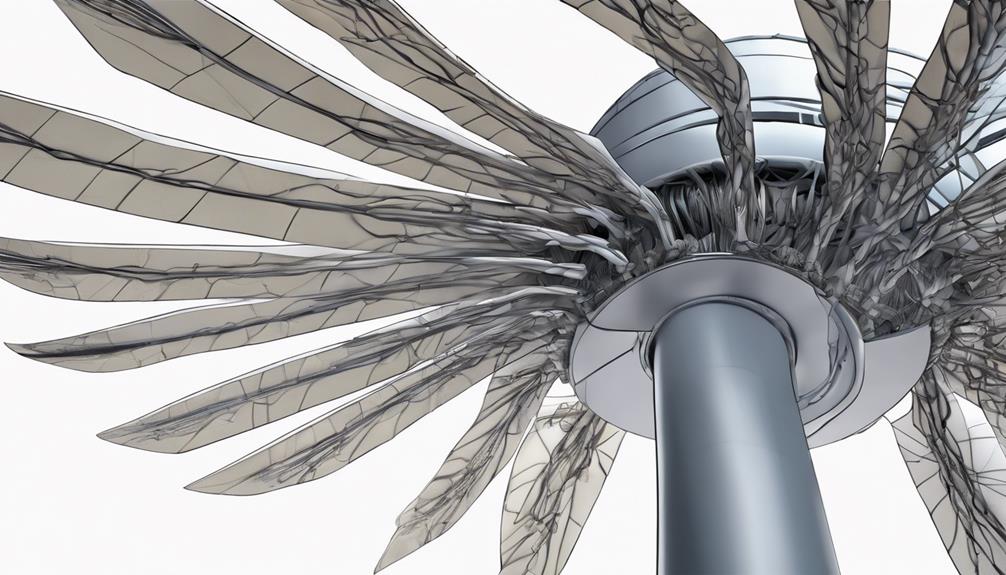
Researchers have been exploring innovative blade configurations to optimize wind turbine performance, with four-blade designs emerging as a promising solution for greater efficiency in lower wind speeds.
This design alteration can significantly impact energy output, making it an attractive option for wind farms operating in areas with slower winds.
Some key benefits of four-blade wind turbines include:
- Higher efficiency: Four-blade designs can capture more kinetic energy, resulting in increased electricity generation.
- Noise reduction: The additional blade helps to decrease noise levels, making them suitable for residential areas or noise-sensitive environments.
- Customization: The choice of blade configuration depends on factors like wind speed, site location, and energy output requirements, allowing for tailored solutions.
Future Trends and Innovations
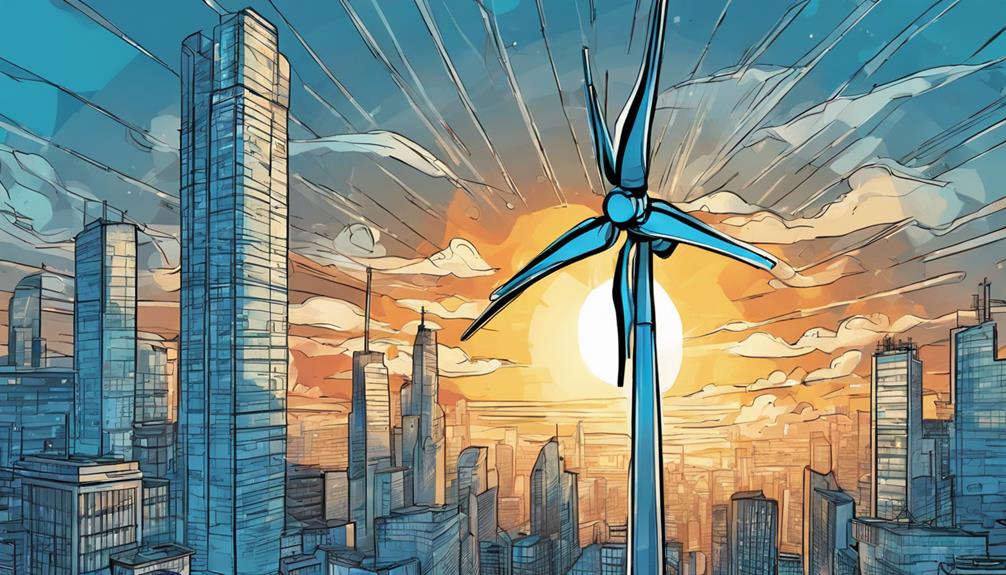
Advances in technology are paving the way for seamless integration of wind turbines into the electrical grid, enabling a more efficient and sustainable energy future. Offshore wind installations are being explored for their potential to generate more power with minimal environmental impact.
Researchers are also developing lighter, stronger, and more durable turbine blades using advanced materials. Smart blade technologies equipped with sensors and adaptive features are enhancing performance and maintenance.
Collaboration between industry, academia, and government agencies is driving innovation in wind turbine design. As a result, wind turbines are becoming more efficient, reliable, and cost-effective. These advancements are poised to revolutionize electricity generation, making wind energy an essential component of a sustainable future.
Maintenance and Efficiency Tips
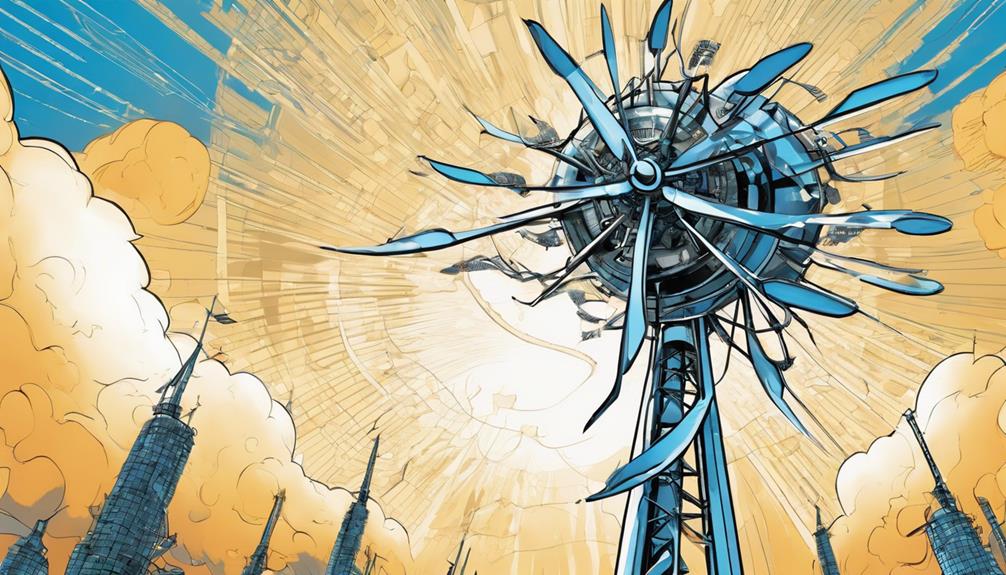
Regular turbine maintenance is crucial to guarantee peak performance, as it can greatly impact energy output and extend the lifespan of wind turbine components. Proper upkeep helps reduce downtime, minimizing revenue loss and securing a consistent supply of clean energy.
Here are three essential maintenance tips:
- Regularly inspect and replace worn-out parts:
Identify and replace damaged or worn-out components, such as bearings and gearboxes, to prevent catastrophic failures.
- Perform routine cleaning and lubrication:
Clean blades and lubricate moving parts to reduce friction and wear, ensuring optimal performance and prolonging component lifespan.
- Monitor and adjust turbine alignment:
Ensure proper alignment to optimize energy output and reduce wear on components, thereby extending the turbine's lifespan.
Global Applications and Markets
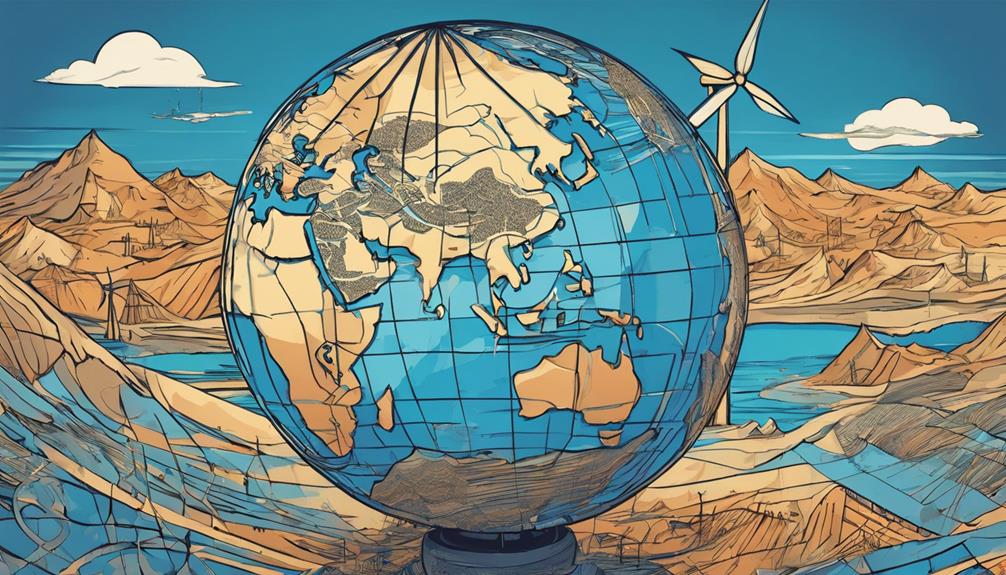
Wind turbines have become a ubiquitous presence in the global energy landscape, with installations spanning across six continents and catering to diverse industries and applications. From powering remote communities to supporting industrial operations, wind energy has proven its versatility.
In the agricultural sector, wind turbines pump water for irrigation, while in urban areas, they provide electricity for residential and commercial use. Offshore wind farms are gaining traction, taking advantage of stronger and more consistent winds.
The market demand for wind energy is driven by government incentives, declining costs, and increasing environmental concerns. As the global energy mix continues to shift towards renewables, wind turbines are poised to play an essential role in the shift to a low-carbon future.
Frequently Asked Questions
What Is the Average Lifespan of a Wind Turbine?
The average lifespan of a wind turbine typically ranges from 20 to 25 years, depending on factors such as maintenance, environmental conditions, and technological advancements, ensuring a long-term reliable source of renewable energy.
Can Wind Turbines Be Used to Pump Water for Irrigation?
She confirms that wind turbines can indeed be used to pump water for irrigation, leveraging their mechanical energy to drive pumps, making them a viable solution for agricultural water management.
How Do Wind Turbines Perform During Extreme Weather Conditions?
She explains that wind turbines are designed to withstand extreme weather conditions, such as high winds and lightning, with built-in safety features like automatic shut-downs and reinforced structures to guarantee reliable operation.
Are Wind Turbines Suitable for Residential Backyard Installations?
"Imagine harnessing the power of a hurricane in your backyard While feasible, residential wind turbine installations face challenges, including noise, aesthetics, and local regulations, making them less viable for individual homes."
Can Wind Turbines Be Recycled at the End of Their Life Cycle?
Yes, wind turbines can be recycled at the end of their life cycle. Manufacturers are developing sustainable recycling methods, recovering valuable materials like copper, steel, and rare earth magnets for reuse in new turbines.
How Do Wind Turbine Mechanics Contribute to Voltage Boost Strategies in Electricity Generation?
Wind turbine mechanics play a crucial role in implementing wind turbine voltage boost strategies for efficient electricity generation. By optimizing the alignment, rotor blade design, and control systems, they ensure that the turbines can capture and convert wind energy into high voltage electricity, maximizing overall power output.
Conclusion
As wind turbines continue to revolutionize electricity generation, it's clear that their impact will only continue to grow.
In fact, the global wind power market is expected to reach 1,400 GW by 2025, a staggering 50% increase from 2020.
With advancements in blade technology and performance, wind energy is poised to play an even larger role in the quest for a sustainable future, making it an exciting time for the industry and the planet.
